| Embata cf commensalis; with 4 toes and (in contrast to Embata laticeps and Embata hamata) with cerebral eyespots. While the two cerebral orange eyespots resemble a Philodina species the rostrum of this morphotype is oriented frontally with streched-out sensory cilia in a manner like a Rotaria-species, for example R. macrura. This is a trait that is also visible in Western´s original drawing of "Philodina commensalis". (1) |
| |
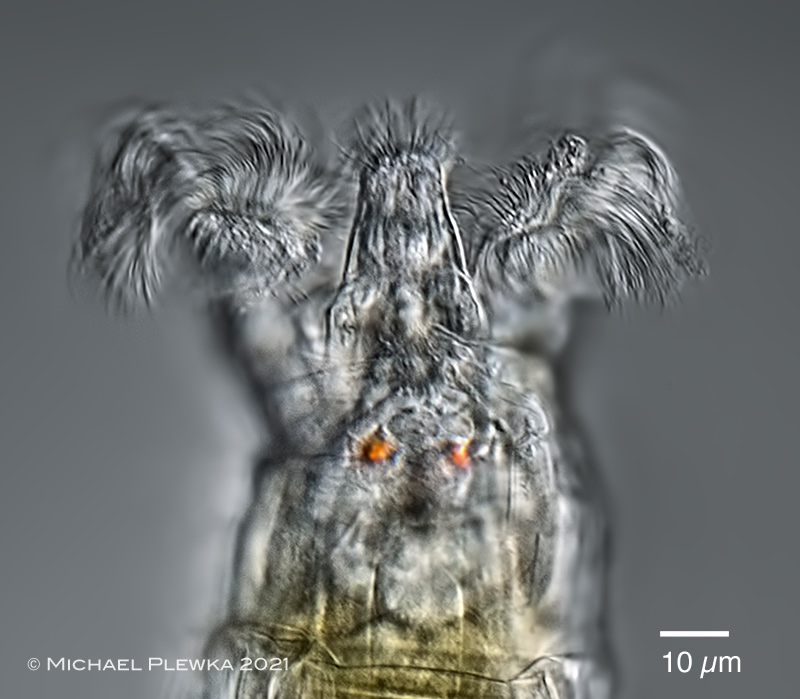 |
| EEmbata cf commensalis; anterior part, dorsoventral view; focus plane on the protruded rostrum while whirling. (1) |
| |
 |
| Embata cf commensalis; anterior part, dorsoventral view; focus plane on the sulcus. Also visible are the setae on the trochal discs. (1) |
| |
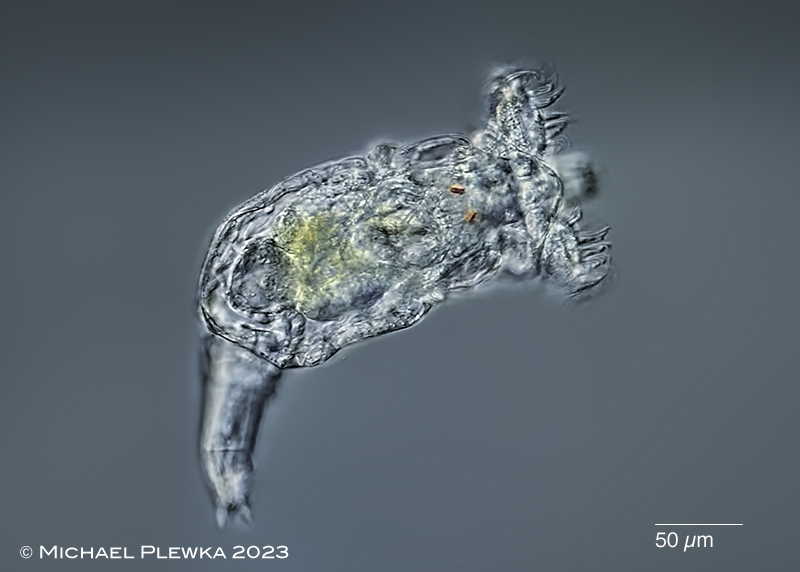 |
| Embata cf commensalis; another specimen, dorsal view, focal plane on the upper lip. (2) |
| |
 |
| Embata cf commensalis; lateral view of specimen with retracted corona (1) |
| |
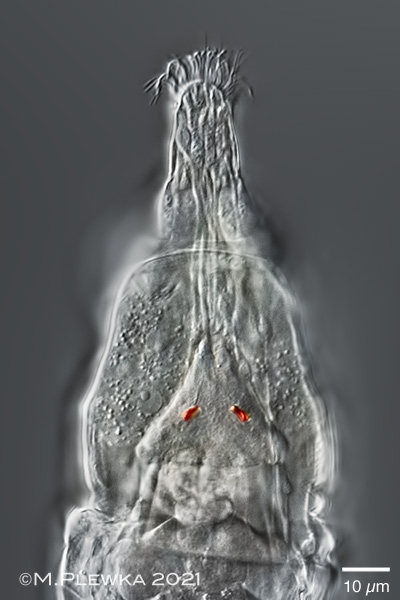 |
| Embata cf commensalis; anterior part of specimen with retracted corona; focus plane on the cerebral eyespots. (1) |
| |
|
|
|
| Embata cf commensalis; foot with spindle-shaped long spurs spurs. Left: live specimen, right: compressed specimen showing the foot glands with granulated content. (1) |
| |
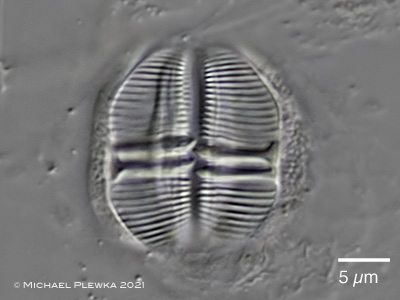 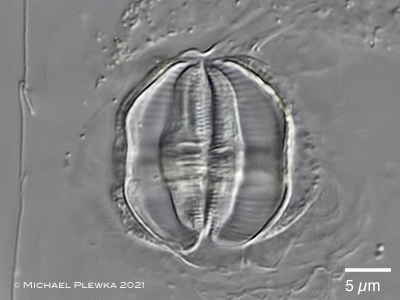 |
| Embata cf commensalis; ramate trophi; Let: cephalic view; dental formula (DF): 2/2; right: caudal view; ramus length (RaL): 18µm. (Images not to scale). (1) |
| |
Comment: some of the bdelloid species from lotic waters are adapted to hosts from the macrozoobenthos such as the aquatic isopod (Asellus aquaticus), where the rotifers live between the gills as commensals/parasites. It seems that the rotifers sometimes detach from their host and can then be found without it (which then makes identification more difficult). For example, I have found Rotaria socialis both with and without Asellus.
Western described (1892/93 ) a species of Embata that he found on this aquatic isopod. He describes this form as "at first sight similar to a Rotaria macrura", which may be mainly due to the forward orientation of the rostrum. Probably because of the eyespots he named this species Philodina (commensalis) at that time (Bryce then established the new genus "Embata" in 1910). This species: Embata commensalis is therefore also found in Donner's book (1965). It is interesting that the description in the text as well as his drawing of this species are based on the drawings in the book of Bartos (1951), whose drawing, however, differs seriously in essential features from the original drawing by Western (unfortunately the Bartos text is in Czech, I have not yet found a possibility of translation)). As with many other bdelloid forms, photographs of living specimens of this Embata species do not seem to exist, so that no comparison is possible. So the find shown here on this page cannot be identified at all with the book by Donner, because of the misleading presentation in my opinion, although the species is listed there; but the find here largely agrees with the original description of the species Embata commensalis by Western (1892). |
| |
| |
|
Location (1) (2): Stang-Alar; Botanical Garden, Brest; Brittany, France |
 |
| |
| Habitat (1) (2): detritus/ psammon in lotic water (click to enlarge >>>>) |
| |
| Date: 28.08.2021 (1); 10.08.2023 (2) |
| |
|
|
|
|
|
| |
| |
|
|
|